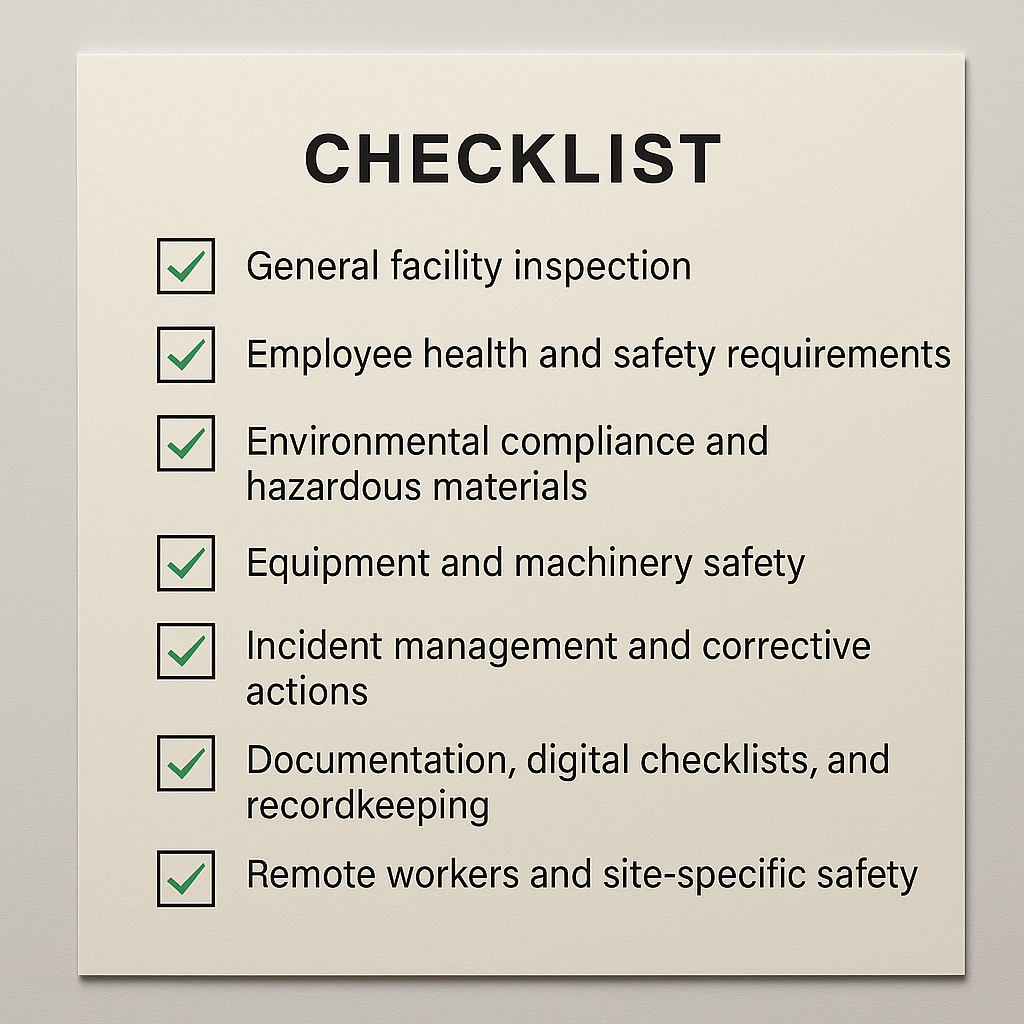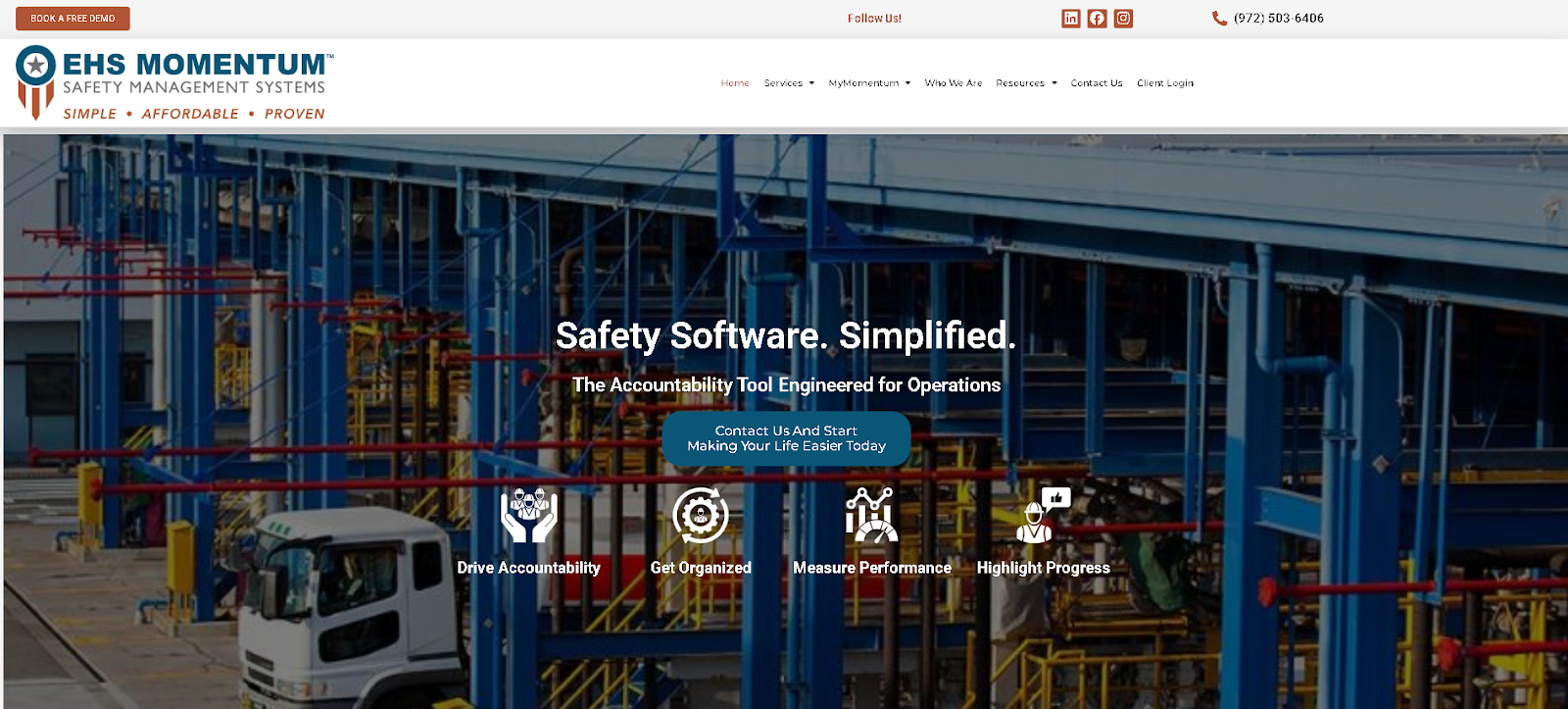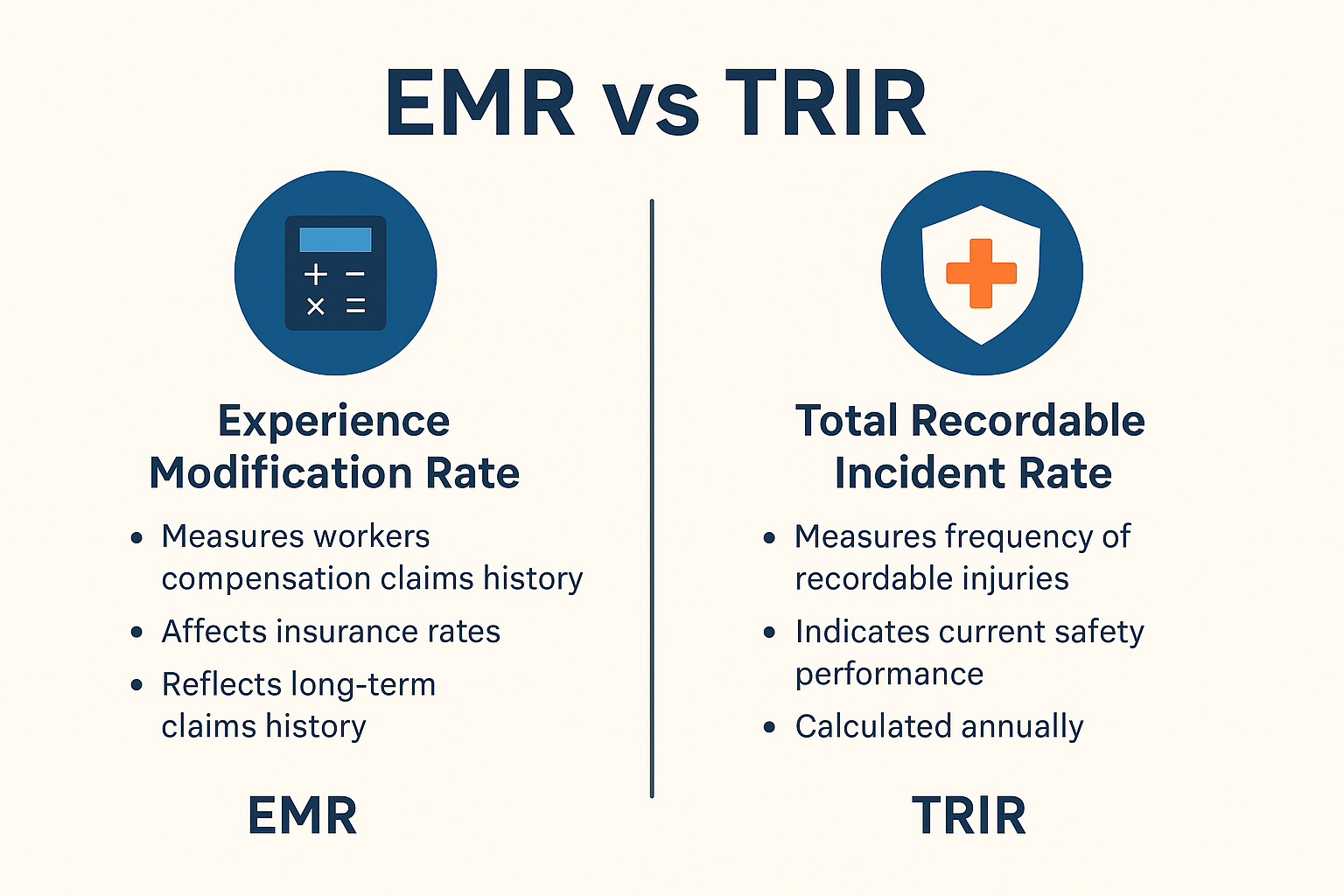Managing workplace health and safety compliance is tough without a system. Important issues like health hazards, electrical and fire hazards, or hazardous materials can slip through the cracks when audits rely on memory or outdated forms.
This leads to missed risks, regulatory compliance failures, and preventable accidents.
An Environment, Health, and Safety (EHS) audit checklist solves this by providing a clear, structured way to proactively identify potential hazards, verify safety policies, and track site conditions over time.
Instead of reacting after something goes wrong, teams can spot problems early and stay ahead of compliance requirements.
In this guide, you’ll learn how a well-designed checklist improves inspections, reduces risk, and helps protect your people and your operations.
What Is an EHS Audit?
An EHS audit is a formal review of your organization’s environmental, health, and safety policies.
Its main goal is to check whether your operations meet key health and safety requirements, follow regulatory compliance standards, and align with your internal safety goals.
The audit process usually includes reviewing documents, inspecting equipment, interviewing employees, and observing real working conditions.
Auditors also specifically check general facility safety, how hazardous materials are handled, existing fire hazards, and other critical areas tied to your organization’s EHS policy.
Key Components of an Effective EHS Audit Checklist

A strong EHS audit checklist goes beyond basic compliance. It covers the full range of risks, procedures, and responsibilities that affect your employees, your environment, and your operations.
Here are the areas every checklist should address:
General Facility Inspection
A safe facility lays the foundation for effective operations.
This section of the checklist makes sure that the site’s safety, including the site establishment’s cleanliness, clear exits, and hazard controls, is consistently maintained.
Questions to consider:
- Is the site establishment’s cleanliness maintained to reduce risks?
- Are walkways, staircases, and emergency exits clear and properly marked?
- Are fire hazards, such as blocked extinguishers or faulty alarms, addressed?
- Have teams identified electrical hazards such as overloaded circuits or exposed wiring?
- Is lighting adequate throughout work areas and exits?
Employee Health and Safety Requirements
Workers must be protected through proper training, appropriate protective gear, and consistent enforcement of safety protocols.
This part checks if employees are equipped and prepared to handle risks safely.
Questions to consider:
- Are employees trained on your organization’s safety policies and procedures?
- Is protective gear provided, worn correctly, and in good condition?
- Are step ladders and other climbing equipment safe and inspected?
- Are workers aware of health hazards like chemical exposure or ergonomic risks?
- Is safety induction training completed for all new staff and contractors?
Environmental Compliance and Hazardous Materials
Maintaining environmental health and meeting environmental regulations is a legal and ethical necessity.
This section focuses on how well your site manages hazardous materials and protects the environment.
Questions to consider:
- Are hazardous materials properly labeled, stored, and inventoried?
- Are spill kits available, visible, and regularly maintained?
- Is the site’s waste management aligned with your organization’s environmental policy?
- Are procedures in place to prevent contamination of stormwater systems?
Equipment and Machinery Safety
Equipment-related injuries can severely impact workers and operations.
This part of the EHS checklist makes sure that machinery and tools are safely operated, maintained, and controlled.
Questions to consider:
- Are machines properly guarded and routinely maintained?
- Are proper laboratory controls in place for hazardous materials and specialized equipment?
- Are broken machines quickly reported and repaired?
- Are vehicle and pedestrian paths clearly separated to prevent vehicular accidents?
Incident Management and Corrective Actions
Even with the best systems, workplace incidents can occur.
This part focuses on whether the organization has strong systems in place to analyze incidents, track corrective actions, and prevent recurrence.
Questions to consider:
- Is there a clear process for incident reporting and escalation?
- Are investigations documented with root cause analysis and assigned corrective actions?
- Are corrective actions monitored and verified for closure?
- Are near-miss events logged and reviewed for continuous improvement?
Documentation, Digital Checklists, and Recordkeeping
Good documentation supports regulatory compliance, audit readiness, and internal improvement efforts.
This section checks whether key records are maintained properly and whether the team has moved from paper-based processes to digital checklists for better accuracy.
Questions to consider:
- Are all quality documents (training records, inspections, audits) up-to-date?
- Is there a digital log system in place?
- Are audit results compiled into professional reports for management and regulatory agencies?
- Can documents be quickly retrieved for external inspections?
Remote Workers and Site-Specific Safety
Modern operations often include remote workers and mobile teams.
This part makes sure that the audit also considers their safety needs and adapts checklists for specific work environments.
Questions to consider:
- Are measures in place to protect remote workers and lone employees?
- Does the audit cover site-specific risks like vehicular accidents, chemical exposure, or fire safety?
- Is the checklist updated for different facility types or mobile work conditions?
Optimize Your EHS Audits with EHS Momentum

Building safer workplaces and maintaining strong EHS compliance takes more than good intentions. You need the right systems, tools, and daily habits.
EHS Momentum provides practical solutions to help you improve your audit process, strengthen your health and safety efforts, and prepare confidently for inspections.
One of the key tools we offer is MyMomentum, a simple, cloud-based platform that replaces outdated methods with modern, mobile-ready safety management.
With MyMomentum, you can:
Conduct Inspections with Digital Checklists
Move away from messy paper-based processes.
MyMomentum enables teams to conduct inspections using fully customizable workplace checklists and real-time reporting tools, eliminating gaps and missed steps.
Track Corrective Actions Easily
Assign and monitor follow-ups for incidents, audits, and inspections in one place.
Use MyMomentum’s simple interface to track corrective actions and verify closure without relying on spreadsheets or emails.
Spot Trends and Potential Hazards
Gain instant visibility into potential hazards, recurring issues, and compliance gaps.
MyMomentum helps you analyze incident data, identify electrical or chemical risks, and combine risk management efforts for smarter decision-making.
Simplify Compliance and Documentation
Maintain complete, audit-ready documents with minimal effort.
Whether you need to export a PDF checklist, prepare for a health and safety audit, or review your site’s safety status, MyMomentum keeps everything organized and accessible.
Protect Remote Workers and Distributed Teams
Safety shouldn’t stop at the office.
With mobile access, MyMomentum helps you protect remote workers, track inspections at multiple locations, and adapt to evolving industry regulation standards.
MyMomentum makes way for easier audits, while also strengthening your overall safety culture to foster better workplace health and help you focus on prevention, not just reaction.
Schedule a demo to see how EHS Momentum can make your safety programs smarter, simpler, and more consistent!
FAQs About EHS Audit Checklist
What are EHS audits?
An EHS audit is a structured review of an organization’s environmental health, safety policies, and day-to-day management practices. It helps make sure that workplaces meet legal standards and protect both employees and the environment.
During an audit, teams specifically check general facility safety, emergency procedures, chemical storage areas, and worker protections.
The goal is to spot risks early, improve operations, and build a stronger, safer organization.
What are the five audit checklists?
The five key areas usually covered by an effective audit process include:
- General facility inspections (e.g., exits, fire extinguishers, site’s safety)
- Employee safety and training (e.g., PPE, safety induction training checklist)
- Environmental health compliance (e.g., waste management, emissions, using a free environmental audit checklist)
- Equipment and hazard controls (e.g., guarding, maintenance, proper laboratory controls)
- Documentation and reporting (e.g., inspection records, PDF checklist archiving)
Covering these areas will help you implement EHS compliance fully and strengthen internal workplace checklists.
How to prepare for an EHS audit?
Preparation starts with reviewing all general safety protocols, checking staff adherence to training, and updating your internal EHS checklist.
You should also conduct inspections in advance, verify that corrective actions have been completed, and maintain a digital log of past inspections to streamline your review.
Platforms like MyMomentum help teams prepare faster by reducing paper-based processes that create gaps and giving access to updated, centralized audit records.
What is a safety audit checklist?
A safety audit checklist is a tool that guides teams through key inspection points during a health and safety review. It acts as a general checklist to confirm that essential safety practices are in place and properly followed.
A good checklist helps companies proactively identify potential hazards, maintain strong safety standards, identify electrical risks, and align policies to meet industry regulation requirements.








